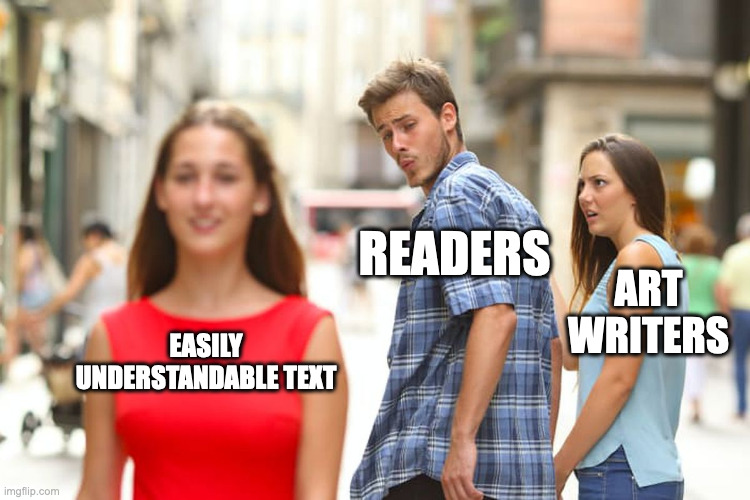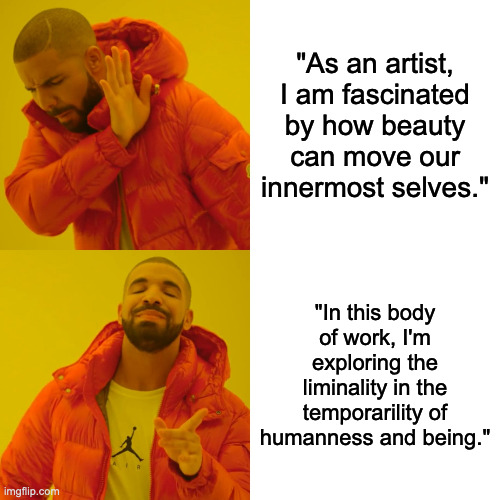The world of photography (aka photoland) stubbornly clings to a rather limited set of beliefs, even as the way photographs are viewed and used has changed considerably over the past decades. Photography students still study form and content (and only that) and then learn how to edit their photographs based on the idea that it’s only the single, precious pictures that can and should be used.
Consequently, a lot of the conversations in photoland look, well, old-fashioned at best and out of touch at worst when seen from the outside. For example, street photographers still insist on their rights to make their photographs even as the societies have changed their views of people’s privacy rights considerably. And crucially everybody is using their smartphone to take and share their pictures of what they’re doing — as if you could just do that! (Well, you can, and it’s fun — try it!)
One of the most astounding observations for me is that many people outside of photoland are adept at using photography in a fashion that most photolandians would struggle with. Memes might well be the most interesting example. They rely on images (often photographs), usually with short text added, and they create pithy and very powerful statements (often humour plays a huge role in them).
Looking at what memes do and how they do that can be used to understand more about photographs.
Before I dive into memes, there is a prerequisite that is simply taken for granted outside of photoland. You wouldn’t be able to make memes so relatively easily if photographs came with fixed and very specific meanings (I’m going to focus on photographs here; there is more to memes but you can read up on that elsewhere).
Photographs do not come with meanings any more than other human-made artifacts do. Instead, meanings are being attached to photographs through their use and reception. But it’s not quite as simple as that because obviously, in general you cannot attach just any meaning to a photograph. There is a reason why photographers think that their picture has a specific meaning. That’s because photographs essentially are pointers.
What is a pointer? Unfortunately, the concept of the pointer — at least the one I have in mind — comes from computer science (I used to do a lot of programming when I was an astrophysicist). I’m going to try to explain it briefly and in very general terms so you can get an idea of what I mean.
Imagine that you’re writing a computer program that centers on families. Imagine that for each family, you want to store the names. Imagine that you decide that you will use a table (“a set of facts or figures systematically displayed, especially in columns”). In many programming languages, you define a table by giving it a name and a size. You’d maybe use something to the effect of “Family[2][2]”. That basically gives you four data entries that your computer stores somewhere, and you can fill it with your data.
But there’s a problem, because what if your family has more or less than four members? Then, you’re out of luck. You’re either left with unused memory, or you need to re-define things.
In many more advanced programming languages, you can avoid this problem by using pointers. You would use “*Family” instead. This tells the computer “there is this entity that I will refer to as ‘Family'”, and the computer will find some position in memory to store it. You don’t have to worry about where that is, your computer will do the work. Later, when you know the size of the family in question, you can say “OK, now please allocate three units of memory for me” and store your data (because you might have three family members).
Photographs basically operate like pointers when it comes to their meanings. They provide a general location of where meaning can be found, and the meaning is then generated later through a combination of use (how and where the photograph is used/shown) and reception (the people who look at the photograph).
For some people, this idea might sound too complicated. But it only sounds too complicated because typically, photographs are shown and discussed within the same cultural/societal circles in which many shared ideas are taken for granted and are thus ignored.
Imagine you see a photograph of a person who uses her hand in a very specific fashion: the thumb and index finger form a circle. Clearly, she’s trying to tell you something with that gesture (that’s the pointer aspect of this example). People from different cultures/societies will associate different meanings with the gesture. In Japan, for example, that’s a common hand gesture for money. In the US, the gesture used to mean “OK”, but it has now been coopted by the far right to symbolize something that is absolutely not OK.
This example is instructive because it demonstrates that different culture/societies might associate very different meanings with the same photograph, and the meaning of a photograph in a culture/society might change with time for all kinds of reasons. But the photograph in questions retains the same very basic idea. This person is sending you a signal: she is telling you something.
That’s why I think that treating photographs as pointers is such a good way to understand how photographs and meanings are connected. Photographs nudge the viewer into a direction, which might be very specific, or maybe it’s more general, and the meaning is then constructed in that area.
Another example: imagine a photograph of an old man in a suit who is smiling at the camera. If you don’t know the person, the meaning you would associate with the picture would depend on what that photograph evokes in you. But if you know that that old man is the US president, then the meaning of the photographs becomes a lot more specific. Depending on your particular politics, a very specific meaning will be produced immediately. And note how there is a very different meaning — produced by “the other side”.
Again, on its own the photograph of the president has no specific meaning. As a viewer, you and your politics create the meaning — if you know who that person is. If you don’t know, the game changes considerably.
For photolandian photographers, the idea that the meaning of a photograph is not fixed is a nightmare. Most of them believe that every photograph has exactly one meaning — typically the one they can think of, and the discussion better stop there. And god forbid that someone else would take their pictures and make something with them! I mean, OK, maybe the photo editors of prestigious magazines are allowed to do that. But certainly not strangers who — gasp! — might not even have an MFA.
The reality is, though, that you could learn more about photography by embracing and playing with memes than you might be able to imagine. To begin with, memes require a sense of playfulness, which is almost entirely absent in any photoland setting I have been exposed to.
Playfulness is good: it’s not only fun once you’re allowing yourself to fully engage in it, it also boosts your creativity.
The only problem with memes is that not that there isn’t enough information available for them. It’s the opposite: there’s too much. I personally often use a site called Know Your Meme if I need to find out more about something I encounter.
When it comes to memes, not all photographs work equally well. The best pictures contain malleable specificity. On the one hand, they’re specific enough to have a hook you can latch onto. On the other hand, they’re not so specific that anything you can make out of them becomes this one super specific thing.
If you think about it, that’s actually really interesting. In fact, it’s not that different than what you encounter in photoland, where the most interesting photographs tend to be the ones that leave enough space for a viewer’s imagination while not leaving them hanging or shoehorning them into one interpretation.
I’d love to illustrate this article with memes made from famous photographs. But I know that I will get inundated with angry emails from the photographers. So I will stick with some of the well known photographs (or video/movie stills) that have been widely used to create memes.
If you’re uncertain how to approach memes, start with taking a single image, and then add text to it.

It’s not necessarily bad to start with something simple and obvious, because what you make has to work. By now, memes have become so common that for some of the most widely used ones (see above), there are websites you can use to create them.
With these kinds of memes, the added text can serve different functions. It either serves as a label (as in the above case), or it becomes the speech uttered by who or whatever is shown in the photograph. That’s pretty obvious, but it’s important to keep in mind: much like photographs themselves, text can have different functions. You need to understand that aspect for things to work.
It’s also important to note that you do not need to use text on top of a photograph to create a meme. With the “distracted boyfriend” image used above, I have seen people place different pictures on top of the photograph itself. When you do that, though, you need to preserve the essential idea of the source photograph.
I should also note that when it comes to memes, there usually is nothing particularly subtle about them. And the photographs used for memes often reproduce fairly broad ideas and/or stereotypes. If you’re one of those photolandians who writes essays that accumulate a lot of nouns created by adding -ality and -ness to simpler words, this might strike you as problematic. But the key to memes is that they can be very critical — while being easily understandable.

See what I did there?
Anyway, this particular photograph is a great illustration of the idea that photographs act as pointers. They guide you towards something, and you create meaning around that. In the case of the meme, the meaning is fixed through the addition of text.

But that doesn’t mean that everybody looking at a meme will necessarily get it. I could be wrong, but I do think that this meme only works well if you know Bernie Sanders who has a strong Brooklyn accent and who always sounds at least a bit exasperated (these two might in fact be the same thing).
Otherwise, you’d have an older white man in a parka giving you photo advice (which for generations of photographers would just have been your regular art-school experience).
Things get a lot more interesting once you produce a meme that combines two (or more) photographs plus text. You basically get a contemporary version of an old-school comic strip or, if you’re of a certain age, a very short photonovel (when I was a teenager, this kind of material was pretty common).

Of course, things get more interesting in such memes. A common variant involves different pictures of the same person, in particular the person reacting differently to something. That something in the meme is provided by the text, such as in the example above.
Memes can be thought of as didactic, but they’re never didactic in an obvious fashion. Instead, in these kinds of memes, the text pieces sit in the “wrong” spots. It’s very basic, but it’s effective.

Things get a lot more interesting once you use two unrelated photographs, such as in this pairing. Even without the added text, it’s a very interesting pairing, given how inevitably a viewer will attribute human characteristics to the cat. And we read the pairing as if the cat were reacting to the woman yelling, even though we also know that these pictures originate from very different contexts.
In other words, multi-image memes can teach you about sequencing images. But it’s happening in the context of a meme, meaning that all the weight that typically makes sequencing photographs so difficult for people is absent.
The above really is an impossibly long way of arguing that photolandians make their own jobs much too difficult a) by not looking at the cleverness with which images are being used by people who usually have no art education, b) by insisting on much too narrow meanings for their own photographs and thus shoehorning them into much too narrow possibilities, and c) by avoiding aspects of play when putting their work together.
Play plays a crucial part in the development of a human being. Sadly, as adults we shed a huge fraction of our playfulness for any number of reasons. In my experience, most photographers and artists are much too worried about preciousness of their end results — instead of playing with possibilities, the consequences be damned.
Even if your own photographs don’t show, say, yelling women or cats that are disgusted by salad, you can — and I would argue you should — not shy away from using your own photographs in the most outlandish fashions, simply to learn more about their potential and about the possible meanings they can take on.
Furthermore, handing your photographs to someone else so that they can make something out of them can also be incredibly enlightening. Photographers typically only do that when some curator wants to do something (and even then, there often are endless arguments).
Forcing a meaning on your photographs — whether individually or as a set/group — is not necessarily a bad thing. It gets bad when you insist on that and only that meaning. Photography is much too rich a medium for such a narrow-minded and ultimately self-defeating approach.
Playing with memes to see what you can do with photographs is a good way of allowing yourself to get rid of that anchor that’s keeping you forever tethered to that small harbour that you know you need to get out of.
